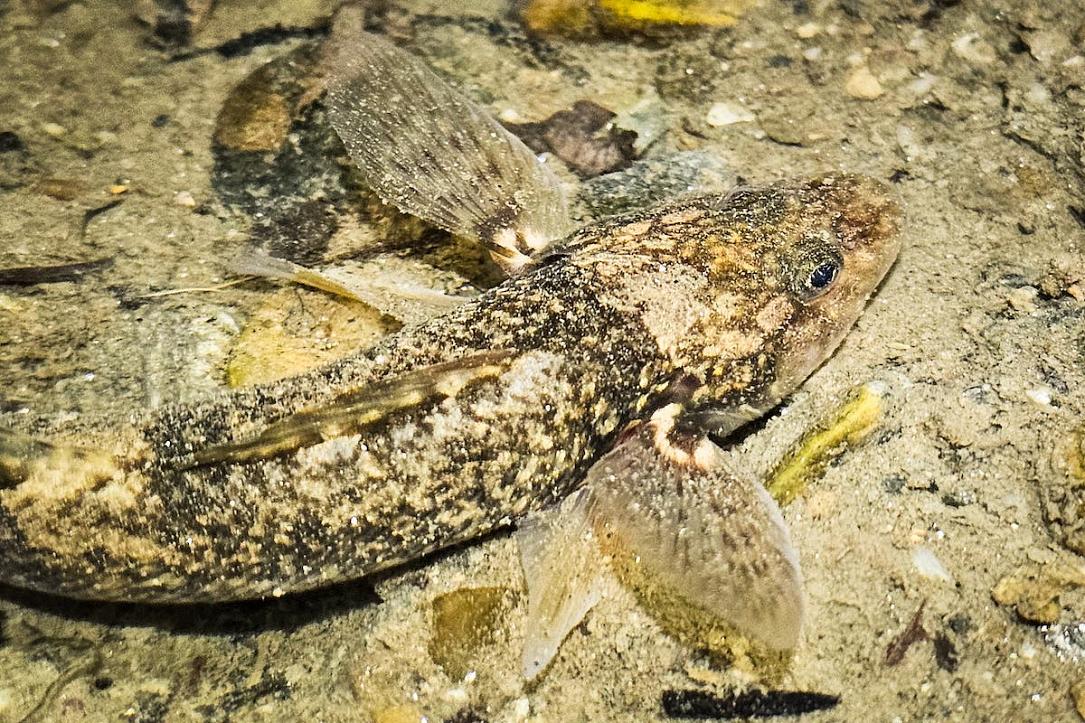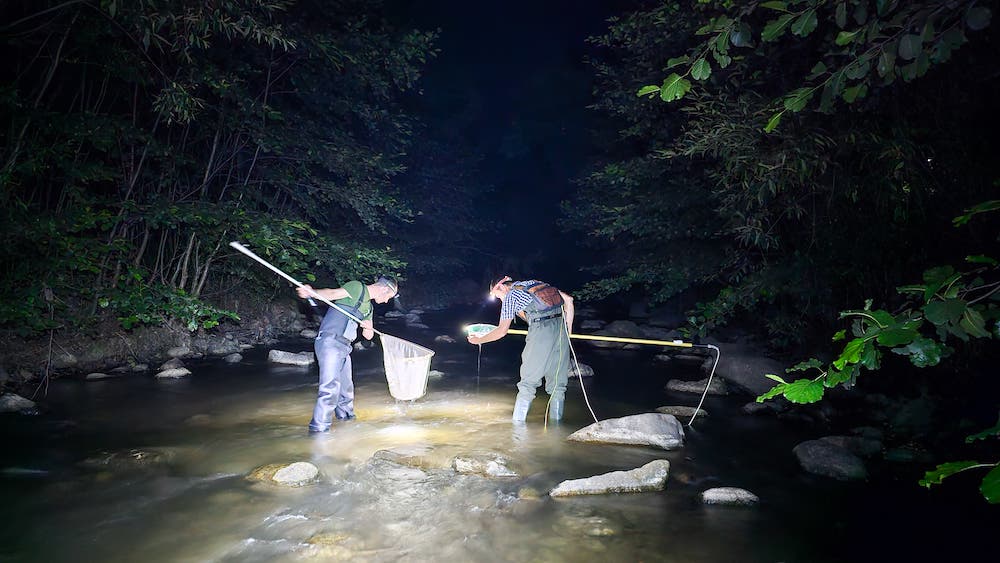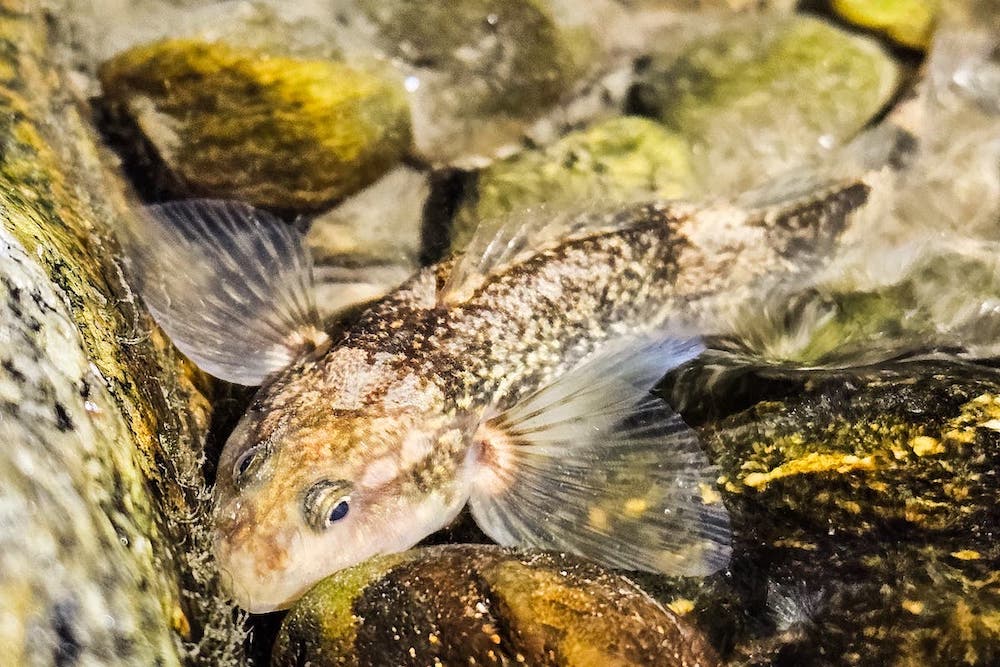Romania’s unique ‘living fossil’ fish filmed after dark for first time as conservation project fights to save it from extinction



Scientific surveys of the little-known asprete revealed constant increases in identified individuals but still not enough to say the million-year-old species is out of danger. The asprete remains the rarest freshwater fish in Europe and possibly the world.
The natural habitat of the asprete (Romanichthys valsanicola) has been shrinking since its first discovery in the late '50s due to various threats like pollution or habitat fragmentation, and for years, the million-year-old species was believed to be extinct. In 2020, Andrei Togor and Marcus Drimbea, Asprete Lives team members and ichthyologists, managed to capture the fish on camera for the first time during the day, confirming its existence on a small segment of the Vâlsan river in Romania's Făgăraș Mountains - the only place in the world where this fish can be found.
Now, during the last of the project's three scientific fishing expeditions, the Asprete Lives team also filmed and photographed the small greyish-brown inhabitant of the Vâlsan river after dark - an important milestone for the conservation of Romania's unique freshwater fish.
"For the first time since the discovery of the species in 1956, we have documented the asprete photo and video, at night, in its natural habitat. It's an absolute first, and I'm grateful to my team for the wonderful things we do together,” conservationist Alex Găvan, founder of the Asprete Lives conservation project, told Romania-insider.com.
The first-ever scientific nighttime fishing of the asprete was done on June 27, 2024, in Mușătești, Argeș county, with the primary purpose of identifying juvenile fish, which is critical for the species' survival long-term. However, biologists Nagy Attila and Mircea Mărginean identified only five adults and no young asprete during these surveys, which the team says is bad news.
Then, during a second nighttime fishing session on June 30, biologists Falka Istvan, PhD, and Arthur de Bruin confirmed two other specimens of asprete in the Vâlsan river in Brădetu commune. But still, no juveniles.
"Although the number of identified asprete has increased, in total, from year to year, not finding juvenile fish is extremely worrying," Găvan said.
According to him, this may be the direct effect of river pollution caused by the area's undersized sewage treatment plant, the lack of sewerage in the Brăduleț and Mușătești communes - the entire area where the asprete still lives, and the rising temperatures of recent years, among others.

Nagy Attila, PhD, an ichthyologist and member of the Asprete Lives team, said that only 6 juveniles were identified during the species' three-year monitoring, and that was in 2022. No others were found during the other fishing expeditions, including the ones carried out at night when the asprete is usually active. Although the exact causes are not yet clear, the experts have some hypotheses.
First, the asprete is mainly active at night and hides under stones during the day, so daytime fishing sessions are not enough to properly assess the species. Thus, this year, the biologists decided to also carry out nighttime inventory actions, although this is not a common practice in Romania.
"For species conservation, it is essential to figure out if finding no juveniles is due to limitations in our scientific methodology, which is unlikely, or if they have indeed been missing in recent years," Nagy Attila told Romania Insider.
Another cause may be the way sediments are discharged from the Vâlsan dam.
"According to the locals, several times a year, the Vâlsan river turns black due to dredging operations, which removes part of the sediments naturally deposited in the reservoir. During these periods, when the water is very cloudy and the conditions in the river are extremely unfavorable, some species of fish, in search of oxygen, jump out of the water and land, incidentally, on the shore. Many of these fish are then found dead on the river bank," Attila explained.
Thus, although the nighttime footage of the asprete is a significant breakthrough in the conservation project's race to save the species from extinction, the lack of juveniles is alarming.
Nagy Attila stated: "If this fact persists in the coming years, there is a genuine chance that the asprete will disappear forever. The individuals identified so far will die naturally in the next 4 to 5 years, and if there are no more juveniles to reach maturity and thus be able to reproduce, the species disappears.”

The Asprete Lives conservation project has also caught the attention of the Environment Ministry, which promised to back the initiative moving forward, including with funding. On June 27, minister Mircea Fechet traveled to the Vâlsan Valley to visit key points of the project, which he said is unique in the world.
"I wanted to come and see with my own eyes the rarest freshwater fish in Europe, and maybe even in the world: the asprete. Of all the places on Earth, the asprete has its last refuge here - the Vâlsan river. It's the only place where it can still be seen," minister Fechet said during the visit, adding that every time a species disappears, it is almost like "the planet dies a little."
"Alex Găvan and his team from the Aspretele Trăiește project have shown that, through constant and long-term involvement, a lot of dedication and action, the disappearance of a species can be reversed. This conservation project is unique in the world. The Ministry of the Environment supports the Aspretele Trăiește project, and together, we are looking for solutions for its financing," he added.

In his turn, during the minister's visit, founder Alex Găvan said the team's dream is not only to save this specific fish species but also to develop a project that becomes a "beacon in the conservation of wildlife and nature everywhere, and at the same time, an inspiration to all those who want to start environmental initiatives to reconnect people with the planet."
He also explained that the Vâlsan river, like many other water streams in Romania and the world, has been facing many threats, which in turn impacted the asprete's distribution area. Among them, pollution caused by discharges from sewage treatment plants that work improperly or the waste thrown in the water, dams causing insufficient water flow, habitat fragmentation, the unsustainable exploitation of rivers, the theft of riverbed gravel, or the unauthorized cutting of trees along the river.
The Asprete Lives team has been working on improving the habitat conditions and stopping the destruction of the Vâlsan river for the past three years, with successful results so far. Still, much remains to be done for the asprete to thrive.
Environment minister Mircea Fechet also agreed that the exploitation of rivers is absolutely needed, but it should be done sustainably and in a way that is friendly to the water ecosystems.
"The ministry is obliged to fund these projects to ensure that not a single drop of pollutants is discharged into these running waters," he said.
Also present at the event on the Vâlsan Valley, Iain Trewby, country manager of strategic project partner Fauna & Flora International, said: "Saving the asprete is not just about saving a small fish from extinction, it is about developing a close collaboration with people in the community to take care of our rivers, rivers that we depend on for survival and well-being.”

In July 2019, Alex Găvan, who is also one of Romania's leading high-altitude mountaineers, introduced the asprete to the world from the summit of Gasherbrum 2, at 8.035m altitude in the Himalayas, his 7th 8,000er climbed without supplemental oxygen. Not long after, he also launched Asprete Lives, the extensive, long-term project aimed at conserving the species and saving it from extinction. The species is critically endangered, although its entire habitat is under the protection of a nature reserve and a Natura 2000 site.
And although the efforts of the Alex Găvan Foundation and partner Fauna & Flora International to safeguard the fish and its environment have had outstanding results in the past three years, the species is still critically endangered and found on the red list of the IUCN, with the asprete remaining the rarest freshwater fish in Europe and possibly the world.
One of the ichthyologists involved in the project, Andrei Togor, explained: "We are talking about a young fish for science, having been discovered at the end of the '50s, and we are talking about a true survivor because, at the time of its discovery, it lived in three rivers. Unfortunately, it has completely disappeared from two rivers. The only population that still exists in the whole world is here, on roughly 15 km on the Vâlsan river."
Official information from the Ministry of the Environment released before 2019, the year the project began, estimated the asprete population to be between 10 and 15 individuals - a minuscule number for this species to survive. In 2020, the team identified 12 individuals, and in 2021 just 10.
Then, following surveys backed by the MBZ Species Conservation Fund, the numbers increased significantly, with 57 fish identified in 2022 and a record 154 in 2023. And, according to partial results of the latest scientific fishing on the Vâlsan river (carried out from June 25 to July 3, 2024), 55 specimens have now been identified in 6 scientific fishing stations.
Another good news is that the specialists managed to detect the asprete on 15 km on the Vâlsan river, from the initially estimated habitat of just 1 km. And moving forward, the conservation project plans to create an even bigger home for the small fish.

The ongoing Asprete Lives conservation project is split into four pillars:
Supporters of the project also include Mastercard, Zitec, Autonom, BRD, and PSS.
Further details are available here.
Irina Marica, irina.marica@romania-insider.com
(Opening photo: courtesy of Alex Găvan)